Week 4 - Complex Negotiations
Negotiation is a much more intricate process than simply two parties haggling over a price; it involves a broad spectrum of circumstances and scenarios referred to as the “negotiation context.” This context significantly shapes the complexity of negotiations, extending beyond mere transactions to encompass various categories of negotiations, including international, internal, board-level, family business, and labor negotiations.
International negotiations, for example, involve not only cultural differences but also political, social, environmental, legal, and financial factors, and often include multiple, potentially conflicting parties. Internal negotiations, which are common within organizations, often involve disputes between different departments over limited resources, quality control issues, or responsibilities related to compliance with regulations and certifications.
Negotiations within family businesses and on boards of directors, although structurally internal, require distinct approaches due to the unique dynamics involved. Labor negotiations are another category, known for their own complexities and challenges.
Complex negotiations are often characterized by their multidimensional nature, varying participants, shifting objectives, extended duration, and potential for changes in the negotiation process itself (such as moving from a distributive to an integrative tactic).
A significant aspect of complex negotiations is that they often function more as collaborative problem-solving endeavors rather than combative disputes over dividing a fixed set of resources. Instead of envisioning a contentious dispute, one should picture a multidisciplinary team working cooperatively to resolve a multifaceted issue that affects a broader community.
Complexity is defined as the interconnection and interdependence of multiple factors in different locations of the world acting simultaneously, and ambiguity is a situation that lends itself to more than one interpretation.
a negotiation is complex when multiple parties intervene (multipartite), with interests that are frequently divergent and susceptible to conflict escalation, different locations and cultures, and above all, coexisting in an environment of significant cultural diversity.
A complex negotiation is also ambiguous when it possesses not only the previous qualities, but negotiation tactics that are dynamic, that is the game structure can suddenly change from distributive or competitive to integrative or collaborative
various classes of complex negotiation: international negotiations, internal negotiations, negotiations in family businesses, negotiation on the board of directors, and labor negotiations.
Characteristics of internal negotiations
good internal negotiation leads to excellent results in external negotiations most important strategy for achieving an effective internal negotiation is: Communicate, Communicate, Communicate… (effectively).
- They typically occur in the internal areas of an organization, but can also take place in an international context.
- They require great flexibility and there is enormous potential for creativity.
- Frequently internal negotiations are followed by external negotiations.
Reasons for internal negotiations to fail
- Lack of a formal practice and well-structured preparation for negotiation.
- Allowing over time that internal negotiators are influenced by assumptions, perceptions, and rumors among themselves.
- Not considering the conflictive interests that can arise among colleagues
- Keeping a distributive, competitive mentality (on occasions confrontational) of a “win-lose” nature as the only option.
Negotiations in family business
Characteristics
- Relationships among family members are based on strong emotional and sentimental ties of life-long dependency.
- Family relationships are based on deeply rooted interaction patterns, created throughout the years, often without the members being aware of these patterns.
- Communication among family members tends to be quite complicated
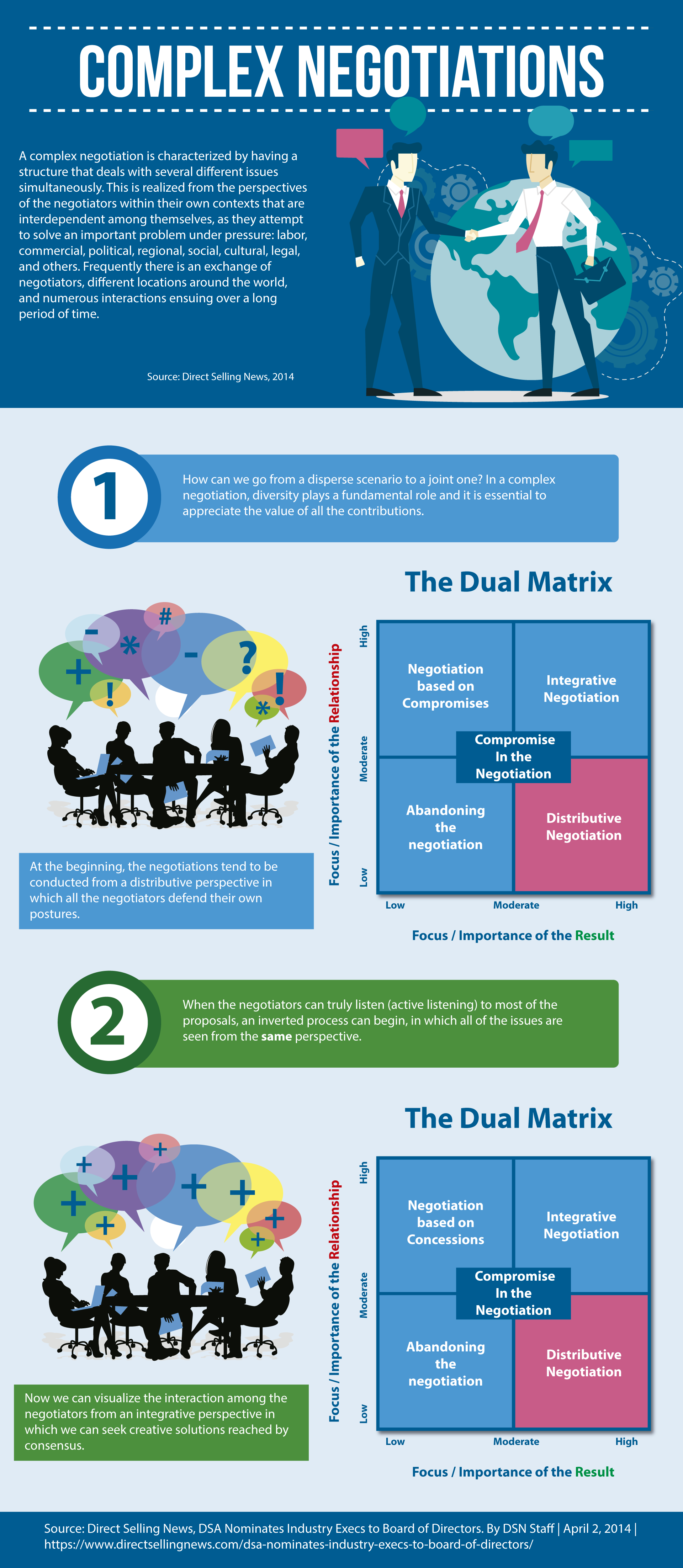
Review
Summary:
In the concluding part of the course titled “Best Practices in Negotiation,” the aim is to review various topics studied across two different courses and highlight the best practices in negotiation that have emerged from business practices and recent academic research. The course prompts students to question the purpose of negotiation and explore the evaluation of negotiation effectiveness, challenging the notion that negotiation skills are solely acquired through experience or are hereditary.
It warns against the misconception that years of negotiation experience necessarily translate into expertise; instead, it might involve repeatedly making the same errors. The course also references significant contributions by Professor Howard Raiffa of Harvard Business School, who is a pioneer in research related to negotiation, game theory, and decision-making.
Furthermore, the course stresses the importance of distinguishing between a mere transaction, which is typically “win-lose” and distributive in nature (akin to haggling over the price), and a negotiation, which is ideally “win-win” and integrative, where parties aim to solve complex problems in a mutually beneficial way.
The course recognizes that in practice, negotiations exist on a continuum between the distributive and integrative paradigms. This positioning creates a significant challenge known as “the negotiator’s dilemma.” To navigate this dilemma effectively, the course encourages students to understand and apply best practices in negotiation. The ultimate goal is not just to learn the principles of effective negotiation but to actively implement them in practice.
[[eK2LK5XxTnWtiyuV8c514Q_1203e40c98ee46cfae6928570835c5fc_Best-practices-in-negotiation.pdf|Best Practices in Negotiation]]
3 Reasons to negotiate
Lewicki, Saunders, Barry (2006)
- to agree on how to share or divide a limited resource, such as land, property, or time.
- to create something new that neither party could do on his or her own.
- to resolve a problem or dispute between the parties (that otherwise would escalate into conflict)
A list of qualities for a good negotiator
What is a negotiation
- “The negotiation itself is a careful exploration of your position and the other person’s position, with the goal of finding a mutually acceptable compromise that gives you both as much of what you want as possible.” (Mind Tools)
- “Creative negotiation is a process whereby two or more partners meet and, through artful discussion and creativity confront a situation and arrive at a solution that best meets the needs of all parties and secures their commitment to fulfilling the agreement reached.” (Gordon Shea)
- “Negotiation is a process by which ‘two or more parties attempt to resolve their opposing interests’ (Lewicki et al., 2010, p. 6)
- “It is back-and-forth communication designed to reach an agreement.” (Fisher, Ury & Patton).
- “Fundamentally, what negotiating is all about is voluntary decision making….So your basic task as a negotiator is to help move someone from “no” to “yes” or from reluctance to commitment.” (H. Cohen)
- “Negotiation is a process of information exchange and commitments in which two or more parties, who have some common and some divergent interests, try to reach an agreement”(translated from Economipedia).
- A “process between two or more parties (each with its own aims, needs, and viewpoints) seeking to discover a common ground and reach an agreement to settle a matter of mutual concern or resolve a conflict.”
- “Negotiation is a process where two or more parties with different needs and goals discuss an issue to find a mutually acceptable solution.” (Business Queensland)
A Good negotiator aims to
- Achieve consistent results for the success of their organizations.
- Encourage long-term productive and collaborative relationships
- Generate lasting solutions of high impact and value generation.
- Avoid short-term results that don’t completely fulfill the parties’ expectations.
- Try to avoid problems and recurrent conflicts in the future.
Example of strategies
A distributive strategy?
Acme Manufacturing and a supplier, Best Parts Company, are negotiating an agreement in which Best Parts will manufacture and deliver 10,000 specific players during a 6-month period. Acme’s purchase manager has instructions to obtain the lowest price possible and is pressuring for $ 1.75 per player. The Best Parts manager, on the other hand, is trying to maximize the price for the company, asking $2.00 per player and is not willing to negotiate about the price. At the end, Acme Manufacturing obtains its price. Since there were several potential sellers to recur to, the purchasing manager stays firm in the price until Best Parts, lacking alternatives for selling its product, accepts the price of $1.75 per player
An integrative strategy?
Gómez Gómez Electronics is negotiating an agreement with one of its main suppliers, Kraft Components, for Kraft to build and deliver 10,000 switches during a six month period. Gómez is interested in obtaining the lowest price possible, while still maintaining a long-term relationship with Kraft, who has been an innovative and reliable supplier in the last years. The sales manager at Kraft wants to maximize the price they’ll receive, but still protect their relationship with Gomez. As long-term partners, each party is willing to reveal some of their interests to the other. This way, if one party makes concessions in price, the other party should offer value by seeking alternatives. Together, both negotiating parties establish an agreement giving Kraft what they desire: a $2 price per switch. In exchange, Kraft is promises to grant Gómez sixty days instead of their habitual thirty days. These extra thirty days will allow Gómez to reduce their working capital needs during the time the agreement is valid. Furthermore, both companies are committed to collaborating in the design of a new series of switches.

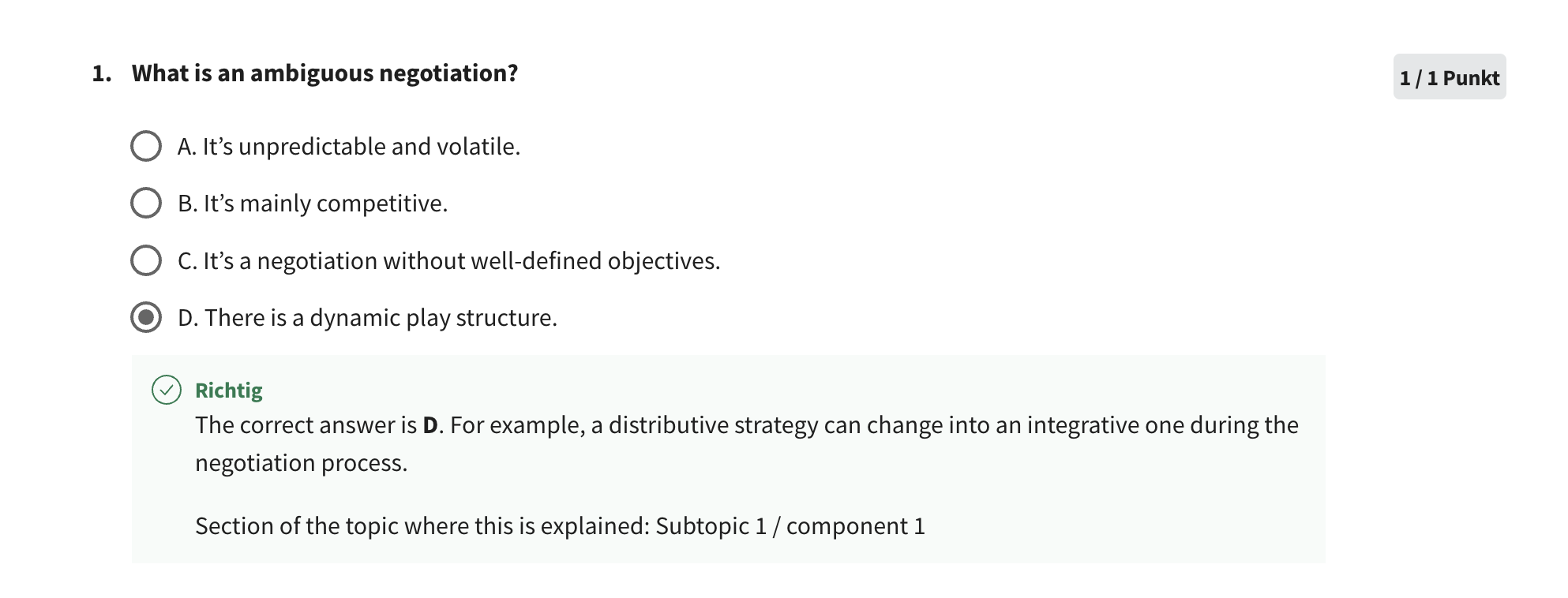

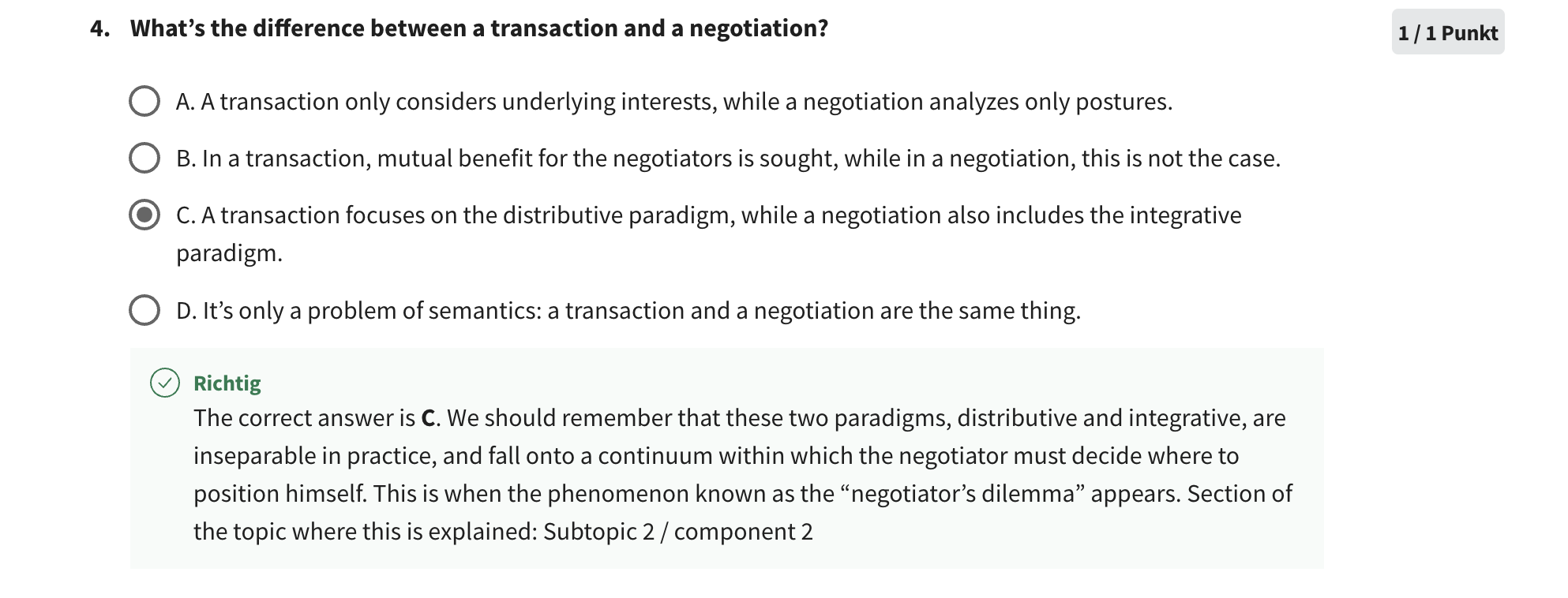

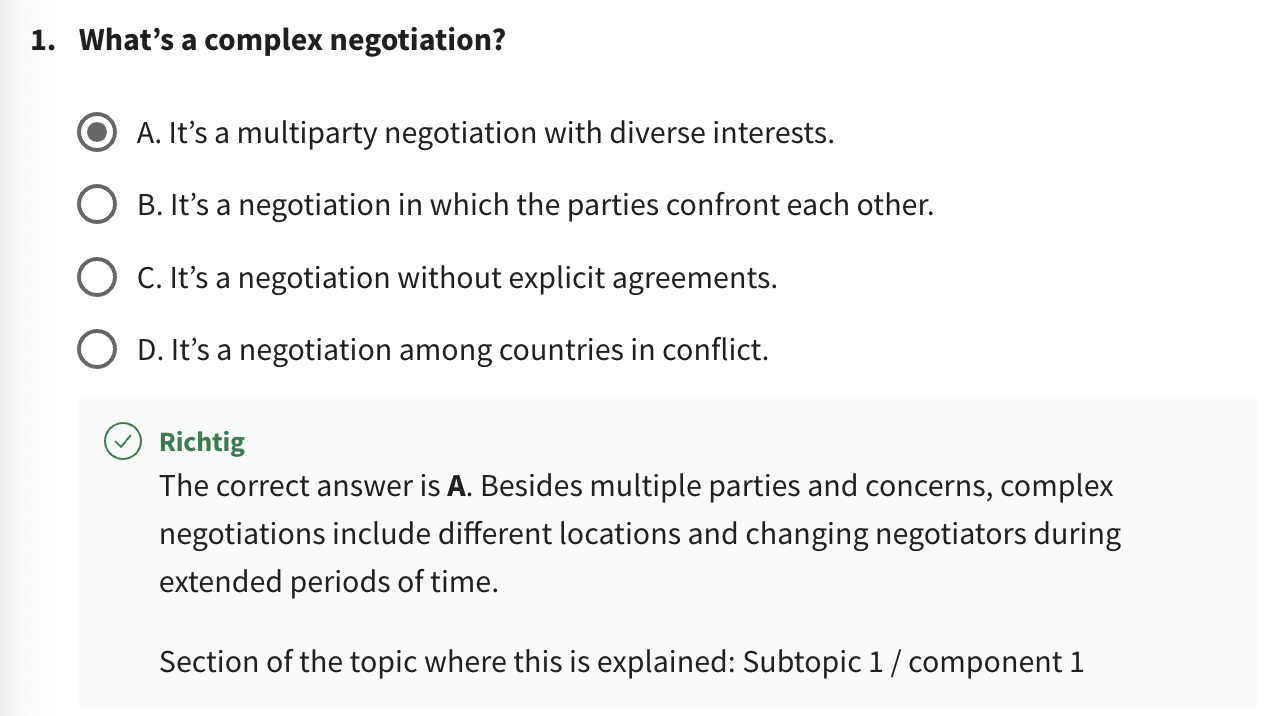
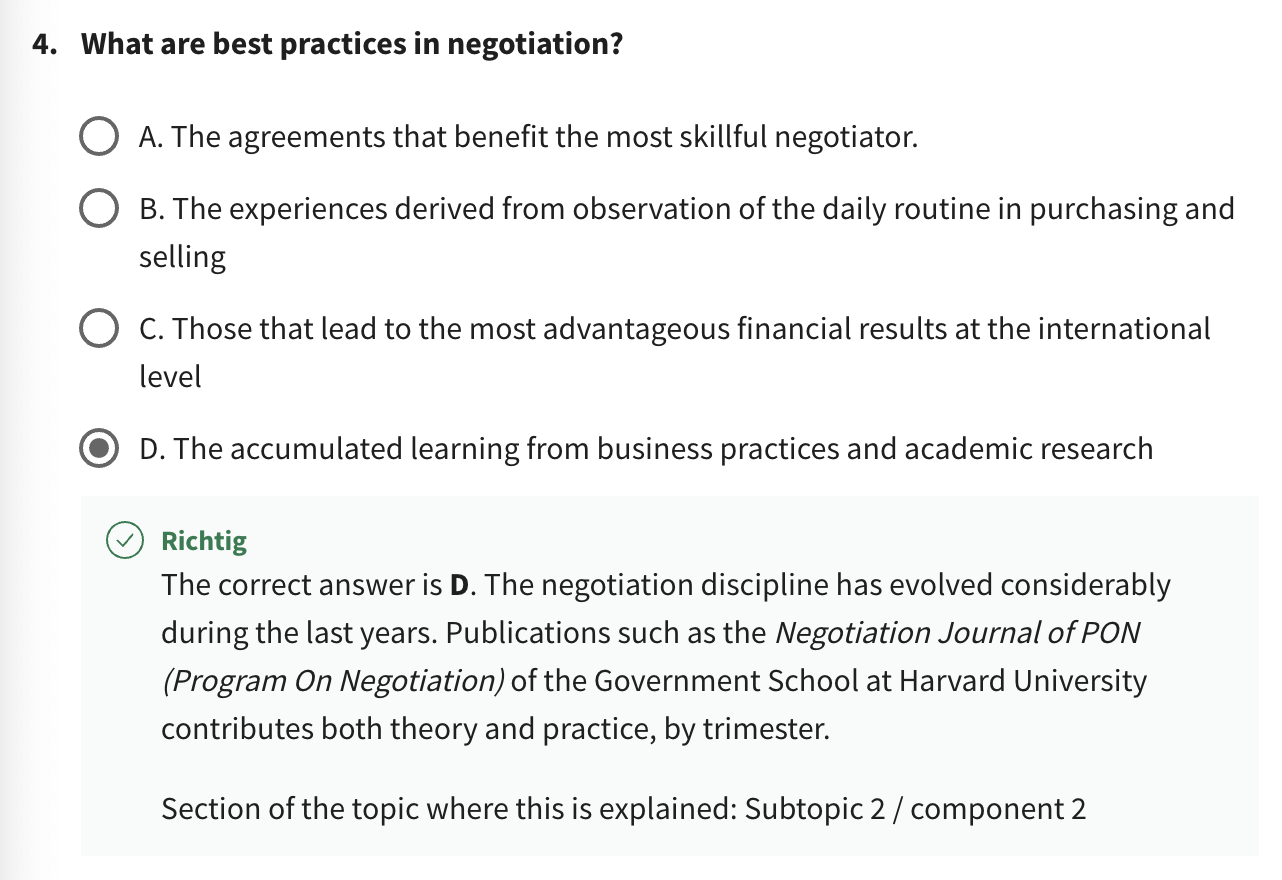
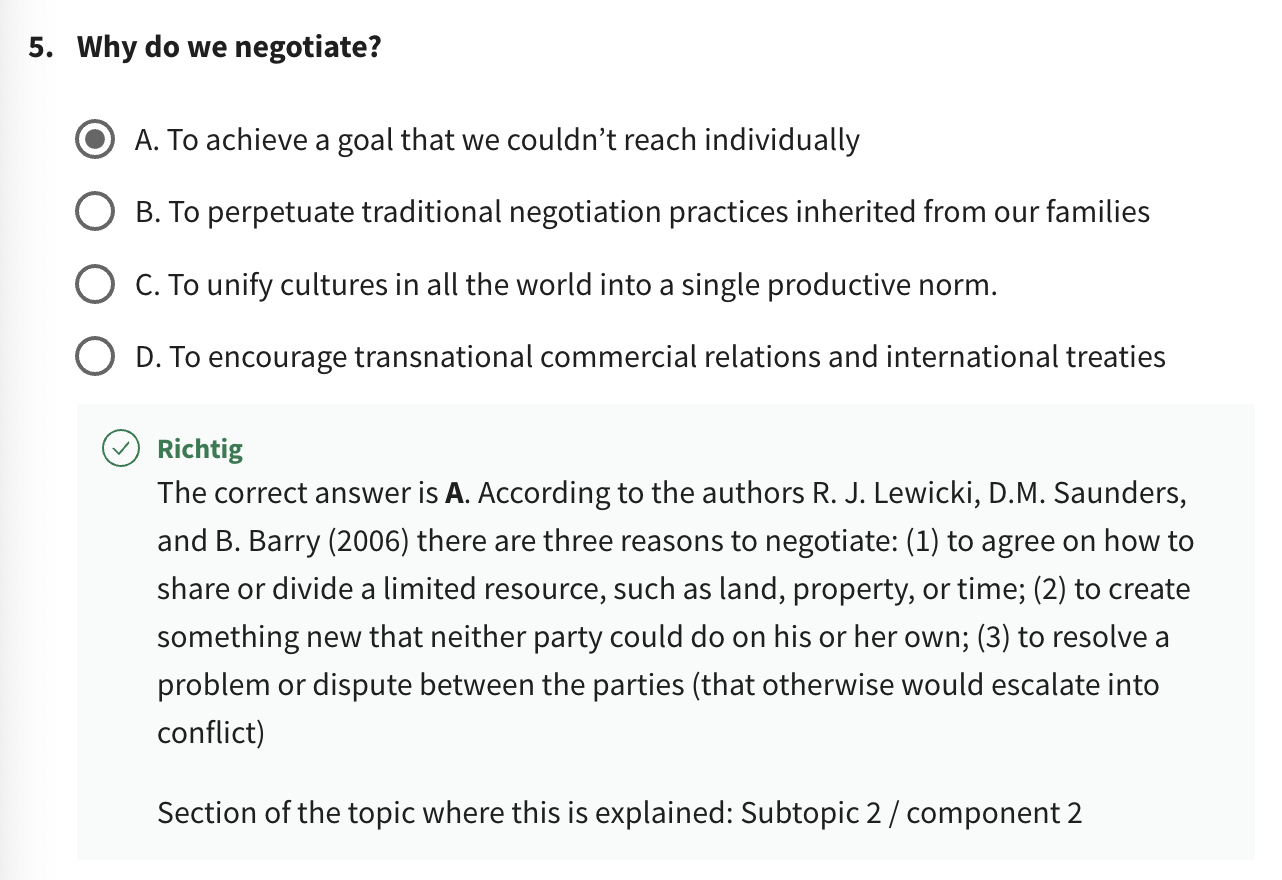

Linking
- ⬅ Week 3 - Internationalization strategy
- ➡ All Certifications in negotiation
- ⬆ MOC Course Effective Communication and Negotiation
- 3D Negotiation - Interview with James Sebenius